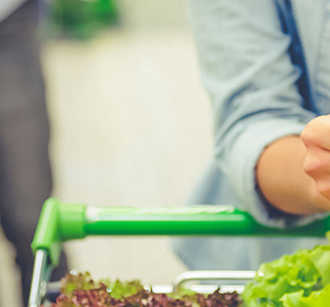
In the highly competitive, low-margin world of the grocery industry, digital transformation presents significant challenges, while at the same time offering tremendous opportunities. Traditional brick-and-mortar stores continue to dominate the grocery experience, but e-grocery is growing in popularity. According to a recent study, 23 percent of American households are buying food online today. A similar study predicts total U.S. online grocery sales will rise to nearly $30 billion by 2021.
To compete with tech-savvy retailers such as Amazon, stores are beefing up delivery options for customers, such as same-day grocery delivery and curb-side pick-up services. These efforts are designed to improve the customer experience, which help to improve engagement and retention.
Digital Payment Options Help Improve Grocery Experience
Ultimately, consumers want a multi-channel, personalized grocery experience. This means options that range from in-store self-checkout to eCommerce and mobile applications. They also want an expanded range of payment options. For grocers, payment optimization is extremely important in this low-margin business. To achieve this, stores need to reduce the total cost of payment acceptance by lowering fees and fraud rates.
Some forward-thinking grocers are exploring options that promote lower cost payments, such as ACH, in exchange for loyalty offers and other promotions. This provides a win/win for customers and the grocer as patrons earn rewards, while grocers drive down costs. As mobile payments become increasingly popular with shoppers, grocers are exploring the ability to vault accounts securely in a mobile application - whether it be Apple Pay™, Google Pay™, Samsung Pay, PayPal, Visa Checkout, or a card on file. This allows them to use tokens in order to authorize transactions in a secure way that doesn’t require shoppers to reenter card details each time they make a purchase. By simplifying transactions, grocers can make shopping more convenient, dramatically improving the customer experience.
Loyalty Cards and Gift Cards Impacting Shoppers’ Behavior
Beyond encouraging payment options, loyalty programs and rewards have proven highly effective at attracting customers and improving sales. A 2017 study found that 45 percent of shoppers indicated they load coupons to their loyalty cards, which was up from 37 percent in 2016. Of those who regularly load coupons to their cards, 90 percent stated the coupon changed their shopping behavior.
Gift cards, also known as branded currency, are presenting new sales growth opportunities for grocers, while improving customer loyalty and reducing the overall cost of payments. First Data’s 18th Prepaid Consumer Insights Study found significant spend lift from gift cards in the grocery industry. The survey revealed that for every gift card purchased, shoppers spent on average 94 percent more than the original value of their card.
How Grocers Can Be Successful in an Evolving Industry
Digital transformation is literally changing how business is done in the grocery industry. And as new competitors enter the marketplace, and experience-enhancing innovations push the industry forward, grocers must remain nimble in order to meet changing demands from consumers. Those grocers who are best able to adapt to this ongoing evolution will be ideally suited to succeed in the future.





